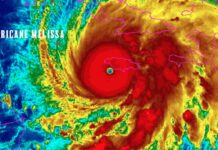As we navigate the complexities of modern life, whether balancing schoolwork or deciding if it’s worth it to pay for essay help, one reality looms larger than ever: the changes that cannot be denied any longer – climate change. This is perhaps well illustrated by the Northern Ontario region, where the fluctuating climatic conditions are already altering the region’s geography and upsetting the natural order of the habitats.
If typical seasons have altered, which is already evidenced in the changes in seasonal behaviors of wild animals, the destruction of Indigenous people’s food has relied on the seasonal calendar that has existed for years. The North is getting warm, and the difficulties cannot be unnoticed.
Northern Ontario, a land of abundant forests, pure water, and severe winters, is experiencing changes in the climate that could have been imagined a few years ago. What was once considered normal winters and snow streaming or lack of the same may gradually shift towards warmer seasons with possible heavy snow or no snow and elongated, very hot summers.
Many of these alterations are changing the area’s physical geography, residents, and creatures.
Observing the climate change in the region, it has been found that over Northern Ontario, the average temperature has increased by about an annual average change rate of 5°C in the last 50 years.
While on the efficiency sheets, it may not appear like a huge difference, for ecosystems that have adapted to living in very low temperatures, the increase in temperature can be devastating. Since the snow melts earlier, it leads to longer fire seasons and changes in the hydrological processes of rivers and lakes, which puts more stress on the already straining ecosystems.
Effects on Wildlife and the Environment
The effects of global warming are illustrated most vividly in Wildlife. Wild animals, such as moose and caribou, used to be in large numbers, but they were forced out of their natural habitats due to the rising temperatures. For instance, moose are confronted with high levels of tick infection where such parasites are improving their breeding conditions due to the warmer winters.
Also, birds and fish with set migration programs and water temperatures have realized they are out of luck. This is called phenological dislocation because it disrupts many processes, including the food chain and breeding cycles.
Local water bodies such as lakes in the northern region are also registering high levels of temperatures that have rolled out negative impacts on the ecosystems and support the arrival of invasive species. Specifically, the invasion of fish, which is found to compete for resources with native species such as the smallmouth bass, is attributed to climate change.
Other ecosystems, such as the Northern Boreal Forest, which some people regard as the lungs of Canada, are also not spared. These forests contain large quantities of carbon, but due to the rising incidents of fires and the slow regrowth period of trees, those forests are emerging as carbon sources rather than sequestration.
First Nations at the Forefront
As is true in many parts of the world, Aboriginal peoples have lived in balance with the land, waters, and seasons of the geography for centuries. However, the increased rate of change in the environment is making it difficult to sustain such practices and social relations.
Another worrying factor is that seasons are becoming more unpredictable in the year. Most Indigenous people use ice roads to transport supplies and access other areas during the winter. Nevertheless, roadway ice formation occurs later in the year and melts earlier. Thus, these crucial roads become unsafe or inaccessible most of the time, affecting the supply chain and incurring high costs.
Also, such cultural practices as fishing, hunting, and seasonal gathering will be affected. Hunted Wildlife, which has been the basic source of food and other necessities of life for these indigenous people, is in the process of being extinguished. Due to these interferences, cultural and religious aspects ascribed to the land and the seasons are under pressure; this makes it not only a vocational but also a racial problem, calling for ideal essay writing service companies to explore the matter and propose vital mitigation approaches.
Forest Fires: A Growing Threat

Forest fires are one of the most significant signs of climate change in Northern Ontario, and the intensification and frequency of the fires are the most apparent. Over the years, temperatures have increased, summers have been hotter and drier, and snow melting earlier and with less precipitation causes more frequent and drastic wildfires. Such intense heat is rare where Northern Ontario’s boreal forests are home, forests that have not experienced such a high burning level.
Of the above percentage, Northern Ontario bore over 1,200 wildfires in 2021 that compelled evacuations to some isolated regions. These fires are not only factors that threaten lives and personal property in the short term but also cause negative impacts on the environment in the long run. Recent fires can take decades to regenerate, and since fire seasons are getting longer, ecosystems are under so much pressure.
The impact on health, for example, is also very profound. Smoke from wildfires affects the burned zones and contaminates the air in cities several hundred kilometers away. Those who live in cities and those who live in the countryside all have respiratory problems, and staying under wildfire smoke means your health will be damaged over time.
What Lies Ahead for Northern Ontario?
Other highlights include the fact that the future of Northern Ontario is still unknown due to the impact of climate change. The worst impacts of climate change are expected to be experienced in the region as global climate change management efforts carry on; thus, the available local, national, and international support systems are required for soft landing. They may consider whether to pay for essay services or do everything themselves, which is quite a minor decision. On the other hand, large decisions, such as how we will tackle Climate Change, are far more important.
Cooperate formations in this regard need to rally for policies that seek to preserve the environment while facilitating development. Therefore, with the support of government, local leaders, and indigenous experts, Northern Ontario can remain productive and relevant as a region during a changing climate.





